Old Favorites
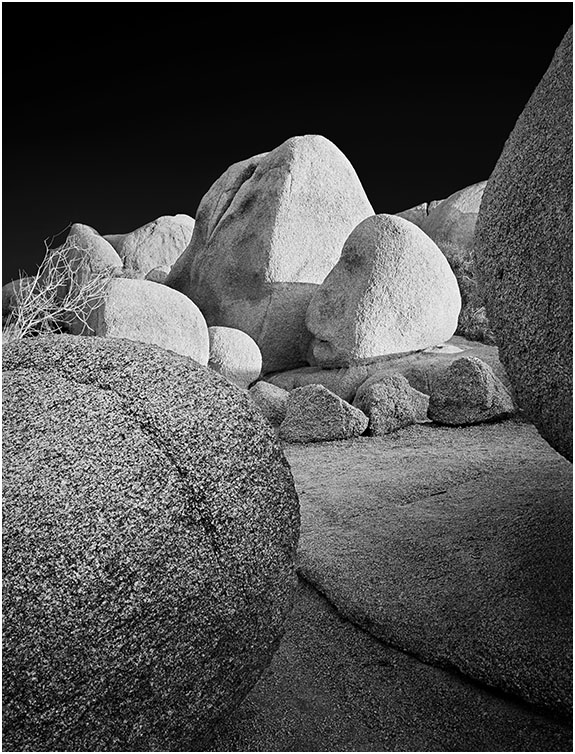
Jumbo Rocks, Joshua Tree National Park

Jumbo Rocks, Joshua Tree National Park
Generally, I target a range of abstraction that is between a what I call a strictly representational picture (for example, a pretty color postcard) and a totally abstract image where the viewer has no idea what the actual object being photographed is. In my first serious one-person photo show in 1981, which was very intentionally a market test of what viewers reacted to, I had a full range between those two extremes. Only artists liked the totally abstract, and the strictly representational photos were not considered art.
Abstraction and art seem to be connected to what makes us human. While I strive to capture the literal details of reality in my photographs, I also hope to have the forms and compositions trigger thoughts and emotions, including a sense of depth, that go beyond what is actually being viewed.
Typical of many of my medium format film images, I controlled the sky tone with a combination of red and polarizaing filters.
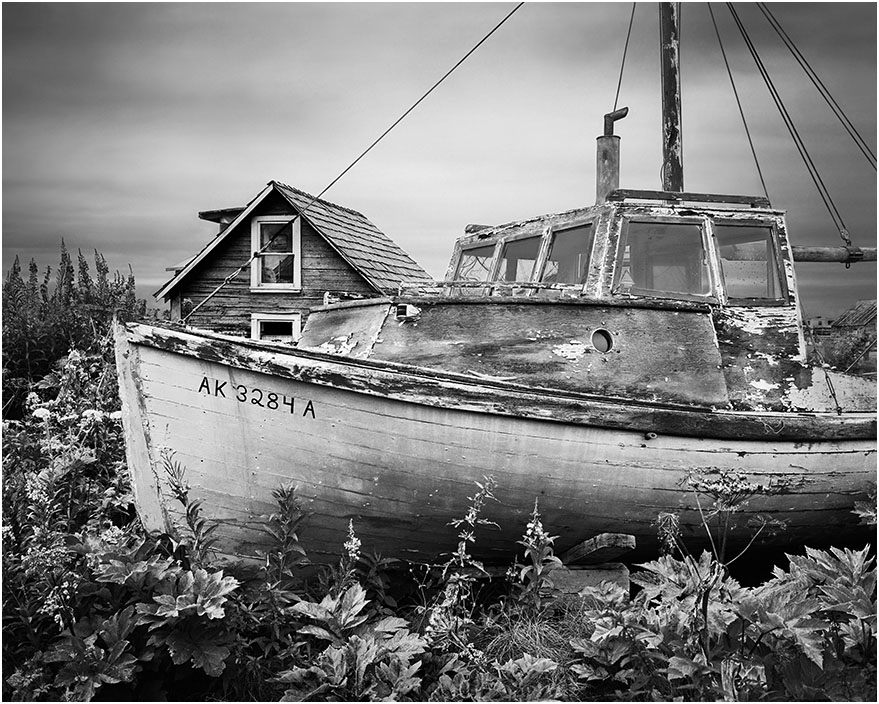
Fishing Boat, Ninilchick, Alaska
In 1969 I spent the summer working the Anchorage, AK -- a very beautiful and interesting experience for a life-long Californian. One of the places I recalled as particularly picturesque was the little fishing village of Ninilchick, on the Kenai Peninsula.
Ninilchik (from the Athabaskan word meaning "lodge is built place") was a Dena'ina Athabaskan lodging area used for hunting and fishing. The first people who would permanently stay in the village were, apparently, Russian traders. A Russian Orthodox church stands on a hill just above where this shot was taken.
My return visit to Ninilchick was not a disappointment.
What shocked me on this return trip to Alaska was the extent to which the glaciers had receded over that 32 year period. Climate change in the northern regions is way more dramatic than what we see in the more temperate zones.
This image was recorded on Kodak medium format B&W film called "T400CN." This B&W film used color negative technology to give a finer (or more diffuse) grain structure. In its day, it was what some considered the state of the art for "high speed" ISO 400 film if fine grain was a primary goal.
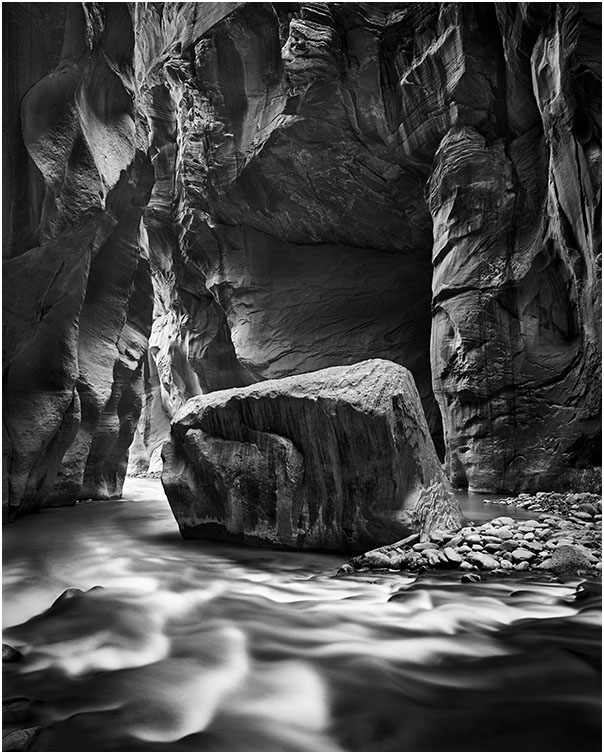
Zion Narrows
This stop in Zion National Park was while driving back from teaching a workshop at the Anderson Ranch Arts Center, in Snowmass Village, near Aspen, Colorado. Of the stops I made on that trek, the Narrows and the Native American ruins at Mesa Verde National Park were the highlights.
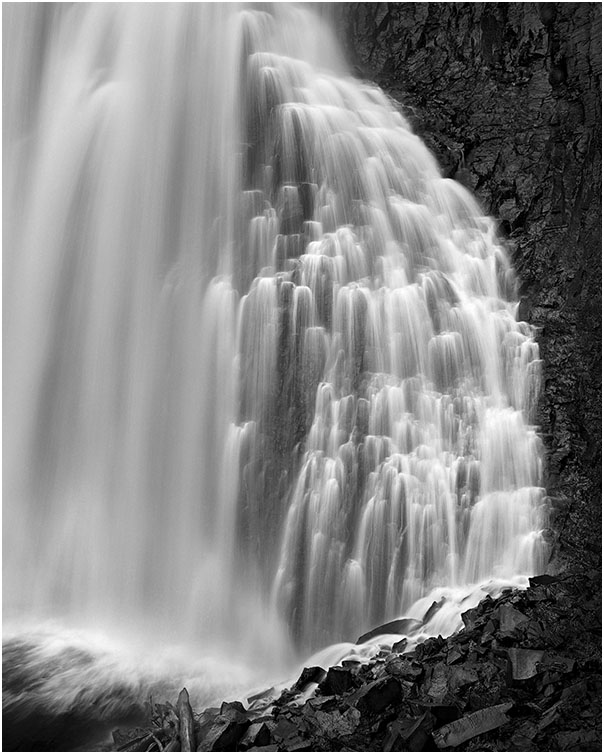
Rainbow Falls
This shot was taken with a very old Rolleiflex twin-lens-reflex (TLR) camera that had the f/3.5 Xenotar lens on it. These old Rolleis are still very capable machines. That said, after a few outings with this Rollei, I was sufficiently impressed by the classic design to invest in a "newer" Rollei TLR, model GX, which has a build-in, behind-the-lens light meter and also has the famous Zeiss f/2.8 Planar lens. The upgrade was well worth the investment. The Rollei medium-format TLR cameras, like the 35mm Leicas, earned their place in photographic history for some very good reasons.
Granite Park
Our campsite was at 11,500 feet in elevation and very close to some shallow, crystal clear pools of water. These pools get warm enough for comfortable swimming. The easiest access to the area is the Pine Creek trail just north of Bishop. Honeymoon Lake is the place to stay if you like trees and a lower elevation.
The Granite Park photograph was taken on my first trip into the High Sierras after buying a Rollei SL66 camera in 1981. As such, the photo has special meaning to me. I used the Zeiss 150 mm Sonnar lens to capture the image. That classic optic's performance demonstrated why we know the name "Zeiss."
Sespe
This photo was about the first shot I took with my then-new Rollie SL66. Unlike most medium format shooters, I bought only the 150 mm Sonnar lens at first. The film used was the late, great Panatomic X. Kodak discontinued Pan X long ago, but I had already switched to an even better fine grain film called Technical Pan. In addition to better reciprocity characteristics, its extended red sensitivity turned out to be very advantageous for B&W photography.
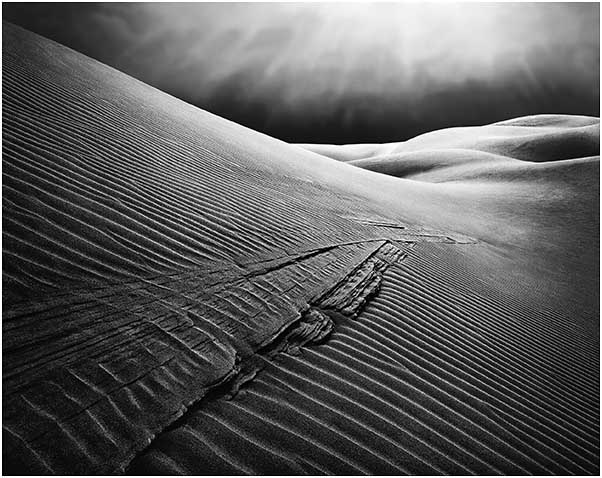
Oceano Dunes
This photo took good advantage of my Rollie SL66's tilt function to get everything in focus from very close to "infinity." The lens was the 50 mm Distagon, which on a medium format camera (120 film size) is a very useful wide angle.